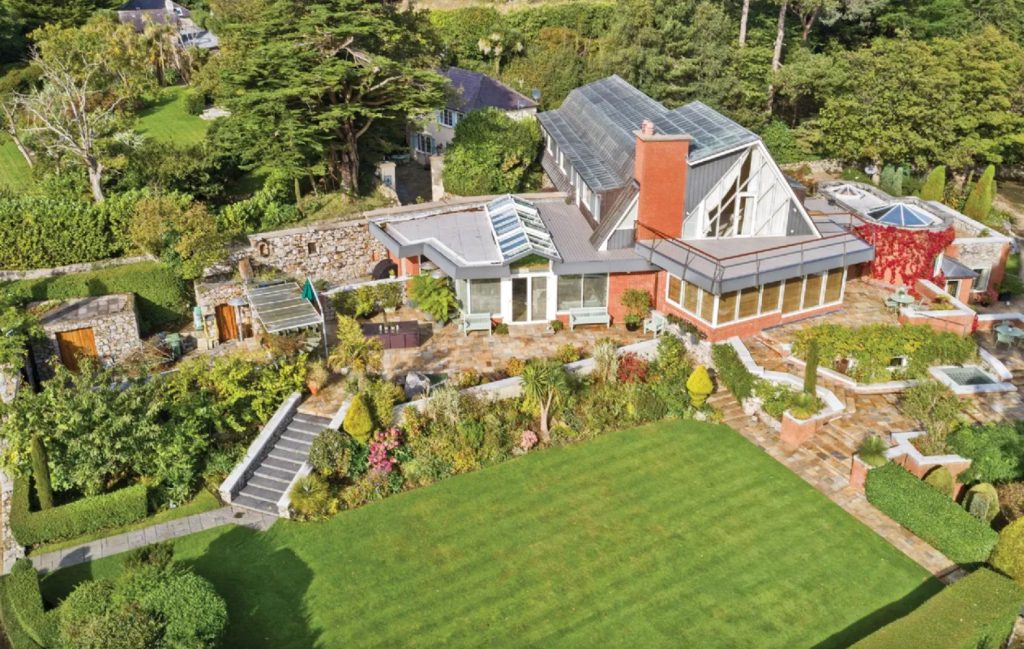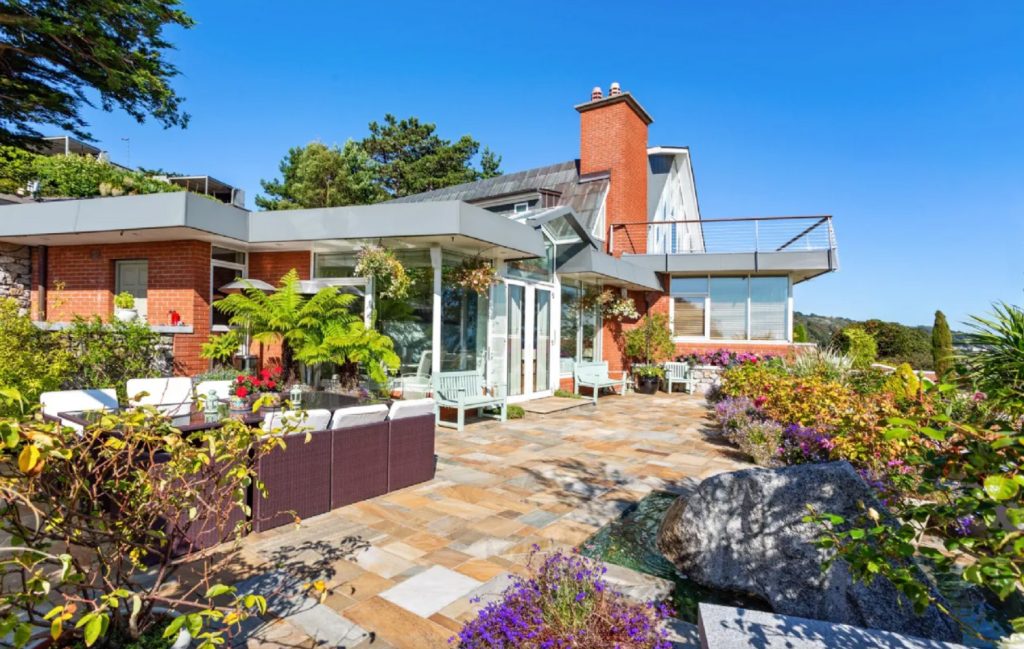Villa Maria
| Name | Villa Maria |
|---|---|
| Address | Killiney Hill Road |
| Year Built | 1954 |
| Architect | Jack O'Hare |
| Exists today | Yes |
Introduction
This article first appeared as Building of the Month – December 2018 in Equitone, the publication produced by Etex Ireland (formerly Tegral). We would like to thank the author, Shane O’Toole, and Etex Ireland for permitting us to republish the article here. Images and photographs are reproduced courtesy of the Irish Architectural Archive.
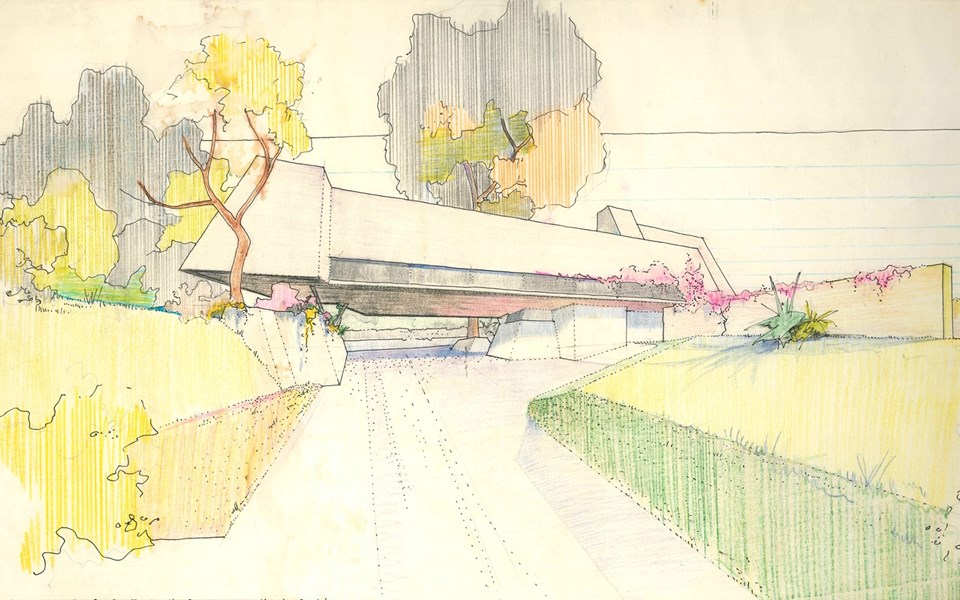
When, in late November, the Irish Times outlined the life story of 99-years-old Jack O’Hare, those of us who knew a little more but had done a little less to promulgate his story felt a shard of guilt pierce us. Jack was the second Irish architect to apprentice himself under Frank Lloyd Wright at Taliesin in America in the 1940s. He arrived there in 1948, shortly after Andy Devane had departed. Others would follow within a few years, including the famous Ituna trio of Sean Kenny – who went on became the greatest West End stage designer of the 1960s – Tony Jacob, who tragically died of polio almost as soon as he arrived in the Americas, and Des Dalton.
Known in Taliesin as Sean, because there were already so many Jacks there, O’Hare stayed for a year – six months in Wisconsin and six in the Arizona desert – before leaving with three friends for California, where they built as a speculation a brilliant sub-Wrightian textile-block house at Midglen, in the hills behind Redwood City outside San Francisco. They lived on site and fashioned and assembled every intricate part of it themselves by hand, including casting all 6,000 blocks, at the rate of 150 per day, working in pairs. The house, which still exists, never sold and eventually fell to one of them, Bill Patrick, while the others returned home whence they came.
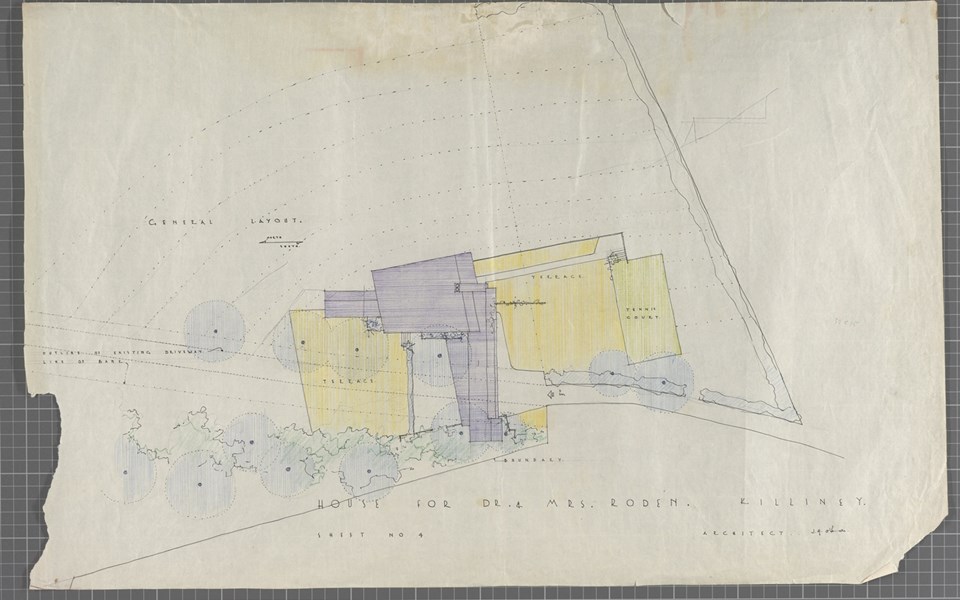
Jack was living in Killiney in a gatehouse (since demolished) he had built for his mother on nearby Seafield Road when Dr Dermot Roden came knocking on his door. Roden, a physiotherapist who had worked at the Mayo Clinic and was Ireland’s leading expert on rheumatoid arthritis in children, and his wife had a spectacular site, carved out of the southern grounds of Summerhill, off Killiney Hill Road. It captured the old driveway leading to the Victorian house.
The trace of that driveway was the key to the design of Villa Maria, as Jack’s colourful concept drawings show. He told Helene Petersen (History of Art and Architecture BA Thesis, TCD, 2012): “When I showed that [perspective sketch] to the client, he immediately wanted to build it. They had so many children, and they all wanted a private room… I thought to myself, ‘God, it’s going to take up half the house to give them all a separate room.’ So I decided, wouldn’t it be nice to put them all together in a bridge – where they could do their homework quietly at night – with a carport underneath?”
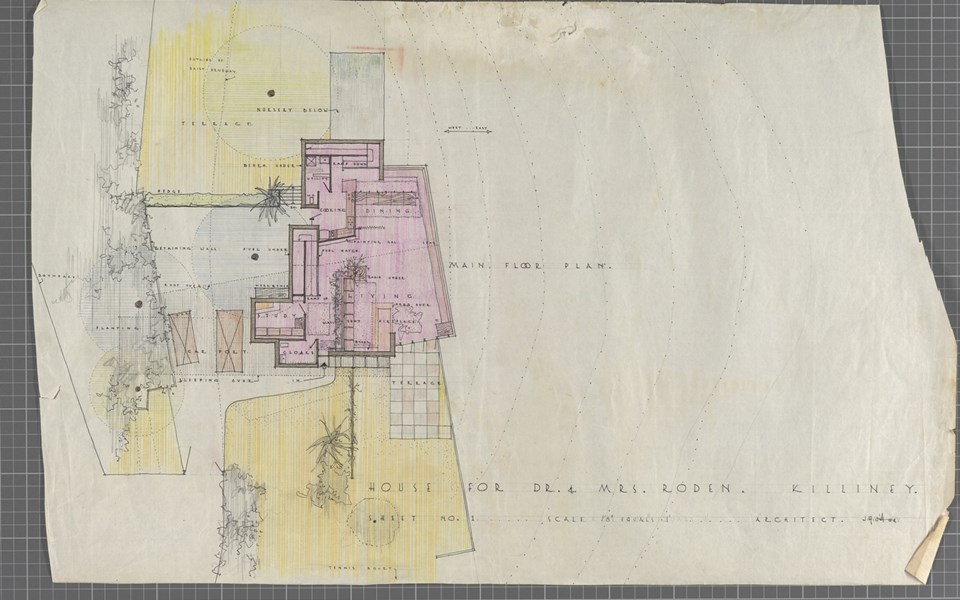
The render atmosphere – all Wrightian vertical setsquare lines and yellow grass and exotic plants – feels light and airy. Optimistic. American. The crisp geometric angles of the form are reminiscent of FLLW’s Californian Mayan works, but floating. The bridge, precisely anchored between two trees, holds seven bedrooms – six for the kids – and two bathrooms, while the brick-locked living rooms and terrace – containing a hint in their inclined parapets of FLLW’s 1949 unrealised design for the Chahroudi House in New York (controversially ‘built’ in 2007 as the Massaro House) – reach east for the sea, Dalkey Island and the far horizon. The scheme as built differs in some respects from these presentation sketches. The working drawings are in the Irish Architectural Archive.
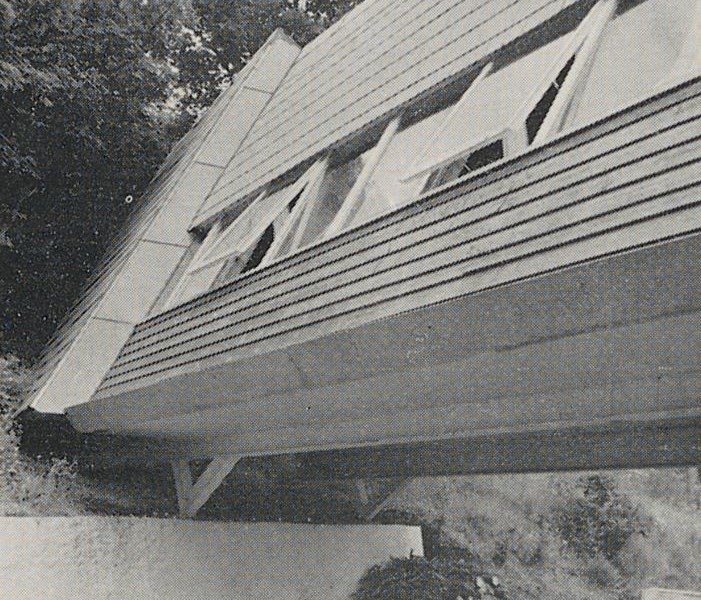
The palette of materials is clear and direct: a battered concrete base, brick-enclosed living areas (including a perforated, free-standing wall screening the terrace) and a light fibre-cement superstructure, including slates and other non-standard cladding elements of a wide variety cut from flat sheets.

Jack married Peggy the following year and emigrated again, initially to the UK, where he worked briefly for Wimpey Construction, and then, in 1957, once more to northern California, where the most important project he worked on was Anshen & Allen’s Union Bank of California in San Francisco (1967). He also built an important house in Ashland, Oregon: the Kazazean House. He returned to Ireland in the 1970s and taught for many years at WIT.
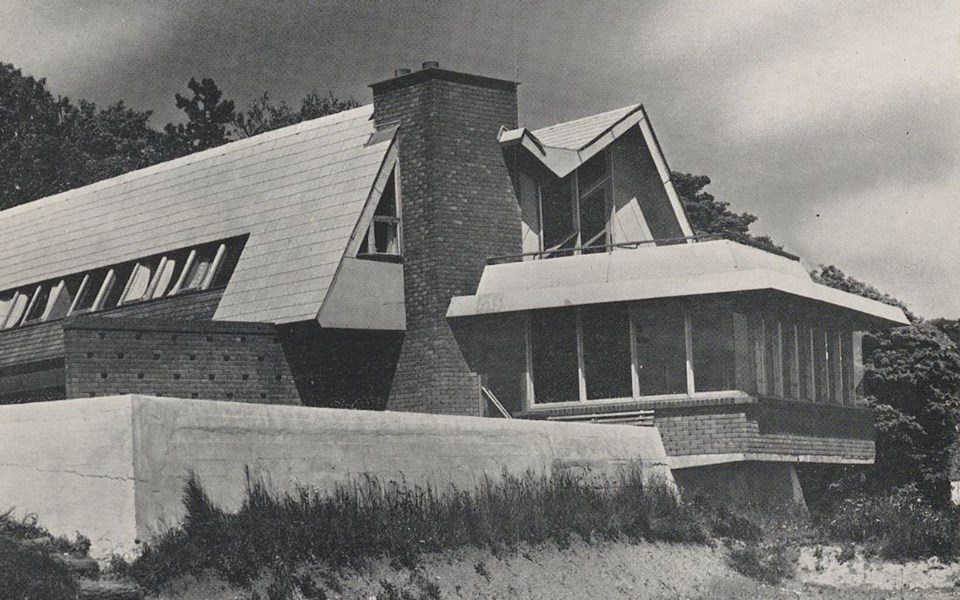
Villa Maria today
Photographs from sales brochure
